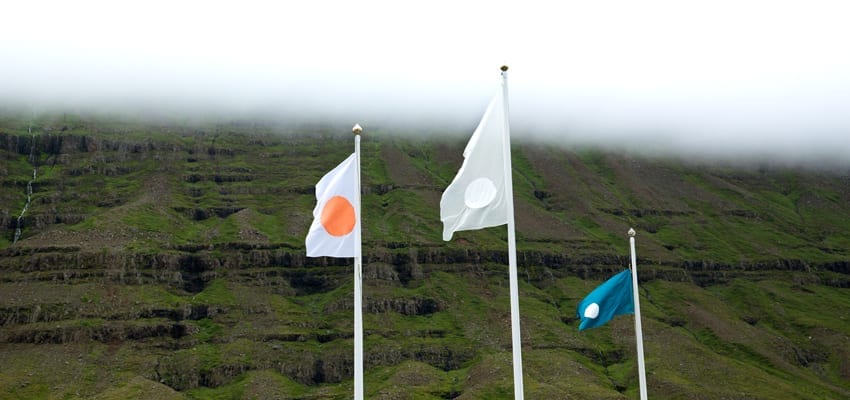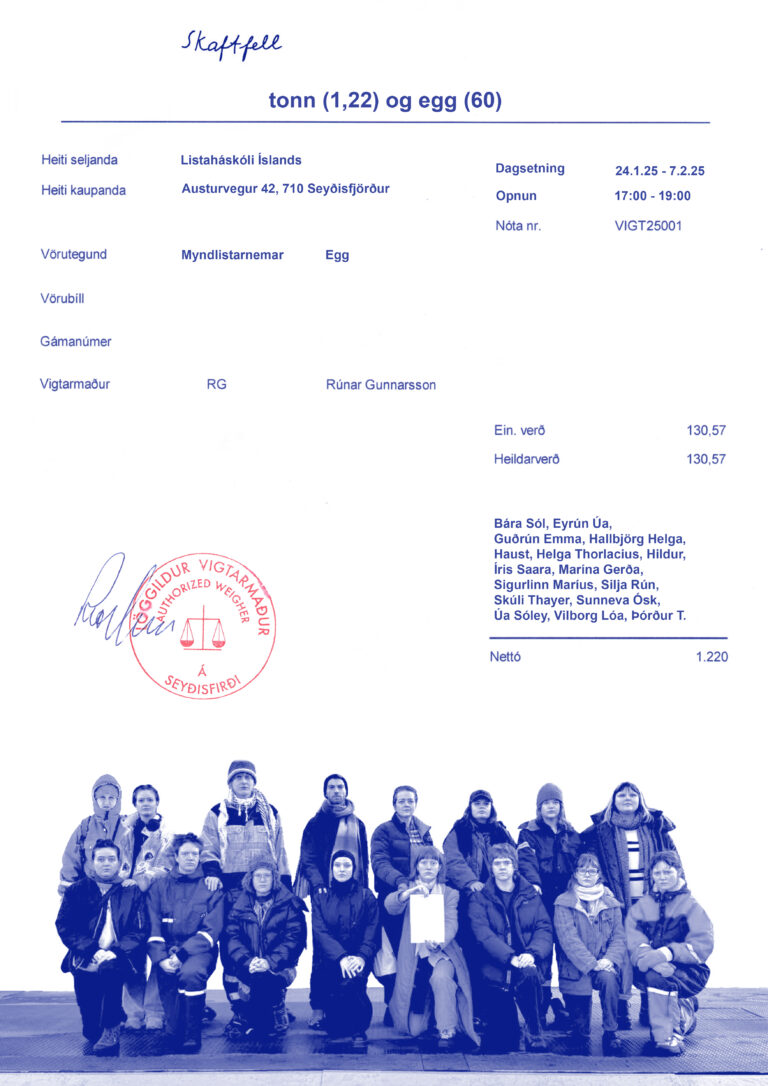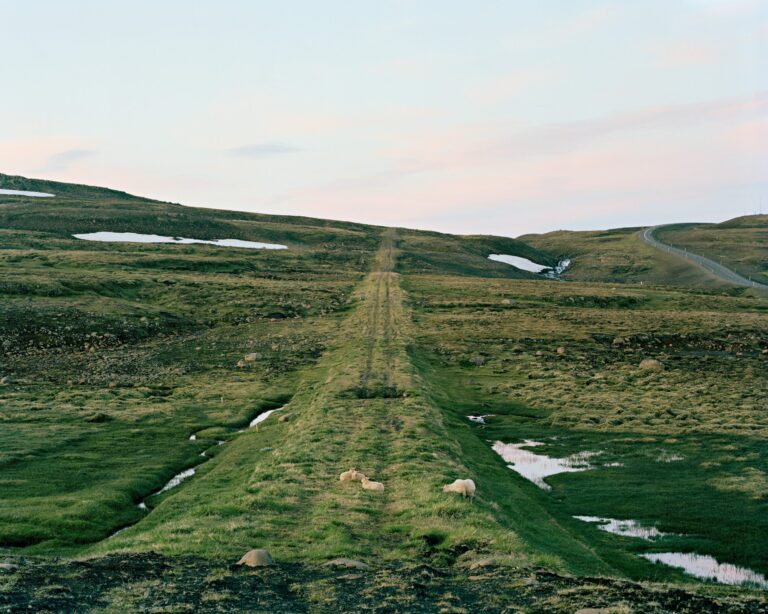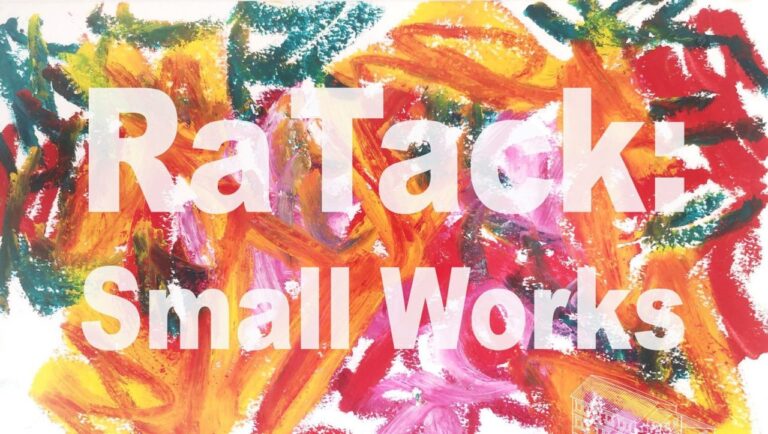The artist group IYFAC (Inspirational Young Female Artist Club) have for the past months researched time as a concept and experience, as well as the connection that humans have with the sun.
We who live in the northern hemisphere are used to the changing daylight in summer and winter. Here, the sun may not be a reliable source for telling the time, but it still takes us gently through the seasons of extreme light and darkness. If we would make our own solar clock, what would it look like and what would it measure?
Our existence is interwoven time. Up to a certain degree, the sense of time is built into the consciousness of human beings. From a very young age we are trained to understand chronology and are required to learn to tell time, but our everyday life is a mixture of subjective and objective sensing of time. The sun has a key role in this interplay. The position of the sun tells us how time passes. It is quite common to find natural reference points in towns and villages, such as certain mountain tops or stone formations, that are used as solar clocks.
Before developing the exhibition, IYFAC visited Seyðisfjörður for a research trip in July. The purpose was to experience and map the town’s circumstances during high summer and to use that information as a comparison while making the art work to be shown during winter. When the sunshine was at its peak the artists scanned the sky, conducted interviews, took measurements and dove into solar terminology. The result was a sun performance which took place under the bright evening sky where the artists attempted to make some sort of a human solar clock. Participants were led in a reverse solar circle around a part of the town while solar flags were raised and a dissonant brass band played far and wide, conducted by the musician Benni Hemm Hemm.
The exhibition White sun opens almost half a year later under very different light circumstances. In the wintertime the sun rises too low to be able to reach the town in its valley, making it difficult to tell the time of the day by referring to the sun. The IYFAC group therefore brought symbolically preserved “suns” from high summer with them, in order to build another solar clock for the winter. The whole gallery space is transformed into a big installation in which the oversized sunflags play the key role. The flags hang side by side down from the ceiling and form a kind of solar path for the viewers. A part of the installation is an audio piece, which interprets the solar cycle, composed by Daníel Helgason. While moving around the space the viewer is offered an experience of time that differs from the everyday. The real sun, the earth’s life giver, has stopped being the reference point and has been replaced by manmade suns, providing an alternative sensual way of measuring time in a place where the seasonal light conditions would otherwise make this impossible.
Bios
IYFAC serves as a workshop and platform for creative dialogue between the group members. The artists participating in this exhibition are Halla Birgisdóttir, Ragnheiður Harpa Leifsdóttir, Ragnheiður Maísól Sturludóttir and Sigrún Hlín Sigurðardóttir. In the last years the IYFAC has held three exhibitions: Ástarsameindir at SÍM Hafnarstræti (2016), I said it before you could say it at Gallery Grótta (2017), and Come Rain or Shine, Hafnarborg (2018).
Halla Birgisdóttir lives and works in Reykjavík. She graduated with a B.A. in fine arts from the Icelandic Art Academy in 2013. Halla uses drawings and texts to create fragmented narrative spaces that appear in forms such as installations, artist books and wall drawings. She calls herself a pictorial storyteller. www.hallabirgisdottir.org
Ragnheiður Harpa Leifsdóttir graduated with a BA in theater from the Iceland University of the Arts in 2011 and a MA in creative writing from the University of Iceland in 2017. She has been involved in many aspects of theater and visual arts, writing, producing and participating in numerous performances, exhibitions and installations, both in Iceland and abroad. www.rahaharpa.com
Ragnheiður Maísól Sturludóttir has a BA in fine art from the Iceland University of the Arts and a background in photography and theater. She works in various fields of the art and has participated in exhibitions and performances as an artist and producer. She also works with Sirkus Íslands and Reykjavík Kabarett. Her work exists on the boundaries of visual and performance art, dealing with everyday magic and human behavior. www.behance.net/maisol
Sigrún Hlín Sigurðardóttir has worked with textiles, text and other elements in her artwork, by way of installation, theatre, radio broadcasting and more. She has a BA in fine art from the Iceland University of the Arts and a BA in Icelandic from the University of Iceland, as well as having studied textile design on a diploma level at the Reykjavík School of Visual Arts. www.sigrunhlin.com






